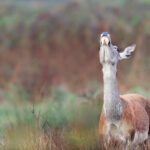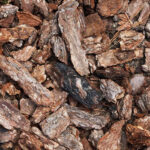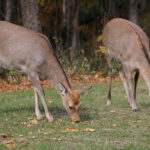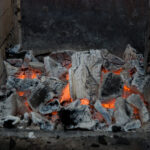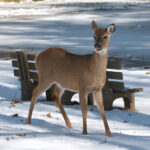While horses and deer may look similar, having four legs and hooves, and being capable of leaping and running, their biology and history differ significantly.
Based on their similarities, people have wondered if they may use deer as they would a horse, as a ride. But, can you ride a deer? Is it really possible?
Table of Contents
- Can You Ride A Deer?
- Most Deer Cannot Be Ridden
- Deer Are Not Domesticated
- How Deer Travel
- Elk
- Moose
- Reindeer
- Conclusion
- Related Posts
Can You Ride A Deer?
Most deer commonly found in North America, like the whitetail and mule deer, are not capable of supporting the weight of a grown human. Their back muscles and spines are not meant to carry heavy loads and would be injured if an adult attempted to ride one.
There are exceptions in history and for certain species closely related to the deer. There are cases of elk and moose having been ridden, as they are stronger animals, but this is rare.
Deer species are not domesticated and wouldn’t willingly allow a human to saddle and ride them.
The most common instance of deer riding happens with the Dukha people in northern Mongolia. There, reindeer are bred and raised primarily as a source of dairy, but also for transportation.
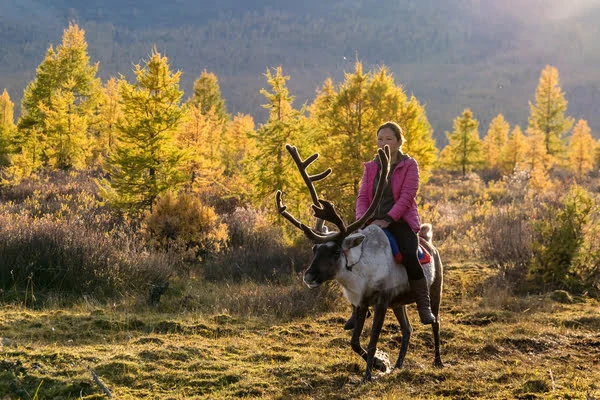
Most Deer Cannot Be Ridden
Besides these exceptions, most deer are not capable of supporting the weight of a grown person on their back.
Their spines are not strong enough to withstand a heavy load, as deer have not been domesticated like horses have, over thousands of years, to carry people and cargo.
Without this gradual strengthening of their bones and muscles, and with bones that are naturally fine and more delicate than horses, a deer can be seriously injured if a lot of weight is placed on the spine. Mature deer can only carry about half their body weight.
Deer Are Not Domesticated
While being physically able to do so, horses are more easily taught to be ridden because of thousands of years of domestication.
Due to their domestication, horses have a largely human-centric relationship, and wild horses are becoming increasingly rare.
Horse domestication began approximately 6000 years ago. Like dogs, horses have evolved to be reliant on their relationship with humans, allowing them to be cared for and ridden so they can survive.
This is why horses are more naturally tamed and trained.
Deer have no such history. Deer have largely remained wild animals in most parts of the world, and have evolved to be wary of humans as one of their main predators. There is no part of their DNA that would be comfortable with a human taming and riding them.
Deer are naturally skittish, timid creatures who are always on the lookout for predators. Trying to ride a wild animal that feels threatened is a dangerous and irresponsible thing to do and should not be attempted.
How Deer Travel
Horses and deer move around quite differently, and deer would not be suitable to travel with the same temperament as horses.
Deer are more erratic and don’t travel directly from point A to point B. Deer would struggle to maintain constant speed and direction from a human rider.
Deer also rarely travel out in the open and on flat terrain. They opt to remain hidden in the forest and are adept at navigating rocky, hilly terrain to escape a predator.
Deer will resist you and attempt to flee if you force them into open flat areas that make them vulnerable.
Elk
There are a few exceptions of riding in the deer family, one of them being elk.
Elk are bigger and stronger than the average whitetail deer and have been ridden without serious injury to the animal. There has also been little success at domesticating elk.
Elk farms exist where they are raised for their fur and venison. In these situations, since they are more comfortable and accustomed to humans, it is possible to ride them.
But this is still a bad idea for a few reasons.
They still have the same fine-bone structure as their smaller deer relatives and even though they have stronger muscles and can handle more, they may still be injured under too much weight.
They are also still wild animals, so while they may tolerate humans riding them for a short period of time, they can still get uncomfortable and even aggressive, trying to buck the rider off or possibly attack them.
Moose
Moose are the biggest and strongest of the deer family, having the most physical capability of carrying a fully-grown human.
Individuals have successfully tamed and ridden moose, while Russia and Sweden have attempted it on a larger scale.
During WWII, Russia attempted to use moose to replace horses in cold climates as they adapt better than horses.
Sweden attempted something similar in the 1930s. These efforts have failed because moose do not have the temperament of horses and do not react well to being ridden.
They are also the most dangerous to try to ride. Moose are typically more independent, rarely domesticated, and more threatened by humans than elk. They are also by far the biggest and most powerful, so being thrown off by an angry moose can be deadly.
Reindeer
Reindeer riding appears to be the true exception. Reindeer have become an indispensable part of the culture of the Dukha people in Northern Mongolia.
Their daily lives revolve around their herd of reindeer, moving along with them as they travel for optimal grazing.
The relationship between these reindeer and reindeer herders is incredibly close. The herders will even sleep in the open air with their reindeer to protect them from predators. Because of this trusting, beneficial relationship, the Dukha are able to ride the reindeer without issue.
Because the people travel with the reindeer, riding them while they travel to new grazing lands is a logical solution to transport themselves and their belongings on the journey.
And because reindeer are stronger and can carry up to 300 pounds, it is a safe way to travel together.
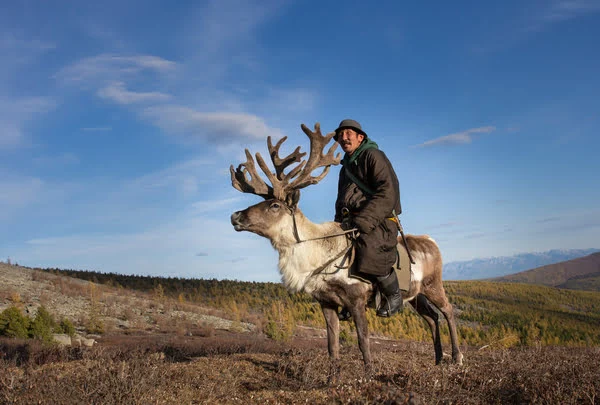
Conclusion
Apart from the rare exceptions in the history of elk and moose riding, as well as the remote Dukha people whose lives revolve around reindeer, it is not possible and not advisable to ride a deer.
They will be extremely uncomfortable and it puts both the rider and the deer at risk of injury or worse.
